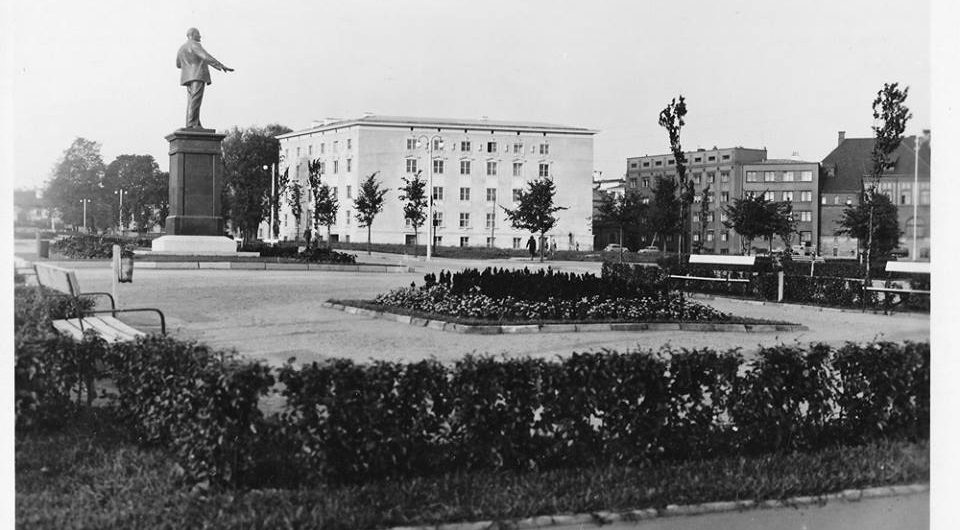Looking for the most interesting Soviet sights in Tallinn? Estonia takes pride in how much the country has progressed since regaining independence in 1991. The Soviet period was one of the darkest times in our history, yet many places from that era still stand today. While locals move on, replacing concrete blocks and old factories with modern buildings, Soviet relics remain as unique reminders of the past.
In most capitals, you’ll find glass towers and conference halls. But in Tallinn, you can still see a former KGB headquarters, prisons that sent people to gulags, and giant monuments that once glorified communism.
Here’s our guide to nine Soviet sights in and around Tallinn. Each tells its own story of life under occupation. Many can be explored on guided tours, where local guides bring the history alive.
👉 Recommended tours:
-
Secrets of Soviet Tour in Tallinn – visit KGB cells, Linnahall, Maarjamäe and more.
-
Tallinn Top Attractions Tour (8 hours) – Old Town highlights plus Soviet heritage.
-
Rummu Submerged Quarry and Coastal Cliffs Tour – dramatic nature with Soviet ruins.
-
Day Trip to Prangli Island – discover Soviet fish industry and coastal life.
1. Rummu quarry
Rummu quarry looks surreal. Its turquoise waters and sandy beaches have fascinated visitors, filmmakers, and locals alike. But behind the beauty lies a grim story. Limestone mining started in the 1930s. In 1938, a prison opened next to the quarry. The Soviets forced inmates into hard labour. Inside, the harshest prisoners often ruled, not the guards.
Today, you can climb the 70-metre spoil hill for panoramic views. From the top, you’ll see the clear lake and half-sunken prison buildings from the 1960s–1980s. On clear days, you may even glimpse the Baltic Sea. The quarry is fenced and has restricted entry, so the easiest way to visit is with a guide.
👉 Best way to visit: Half-Day Tour to Rummu Submerged Quarry and Coastal Cliffs.
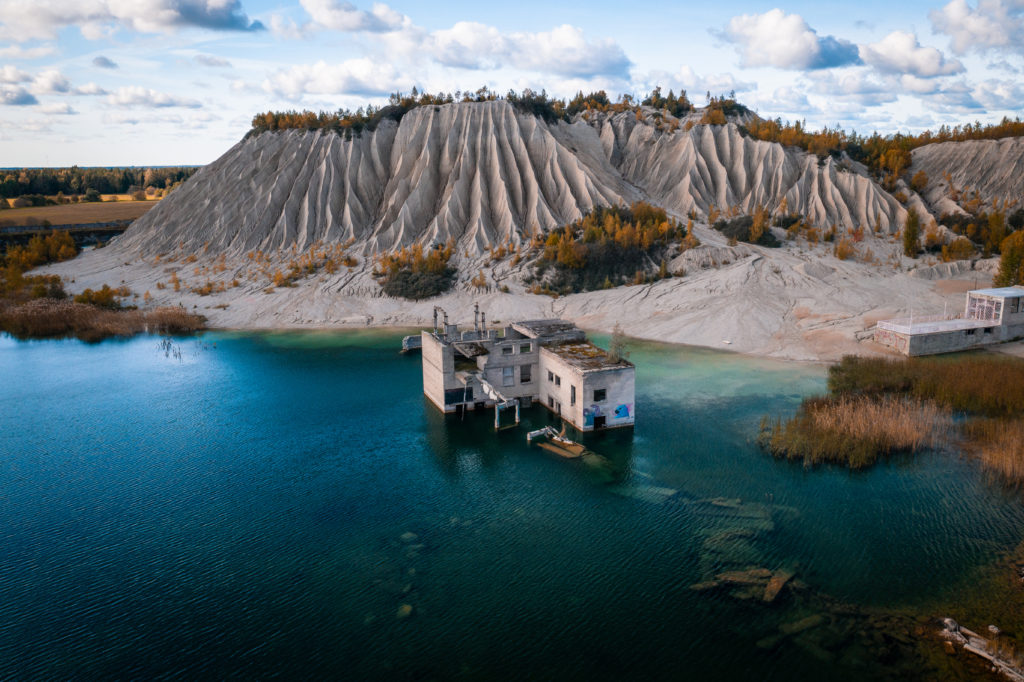
2. Tallinn TV Tower
Built for the 1980 Moscow Olympics sailing regatta, the Tallinn TV Tower symbolised Soviet ambition. Along with Linnahall, Pirita Olympic Centre, and Hotel Olympia, it was designed to impress foreign visitors. It opened just in time for the Games, although many details remained unfinished due to a lack of materials.
In August 1991, the TV Tower played a key role in Estonia’s fight for freedom. Soviet troops tried to take control of it. Four Estonians hid on the 22nd floor and kept the country connected with the outside world. They even gave a live radio interview while under threat. Their bravery turned the tower into a symbol of independence.
👉 Best way to visit: Secrets of Soviet Tour in Tallinn or Tallinn Top Attractions Tour
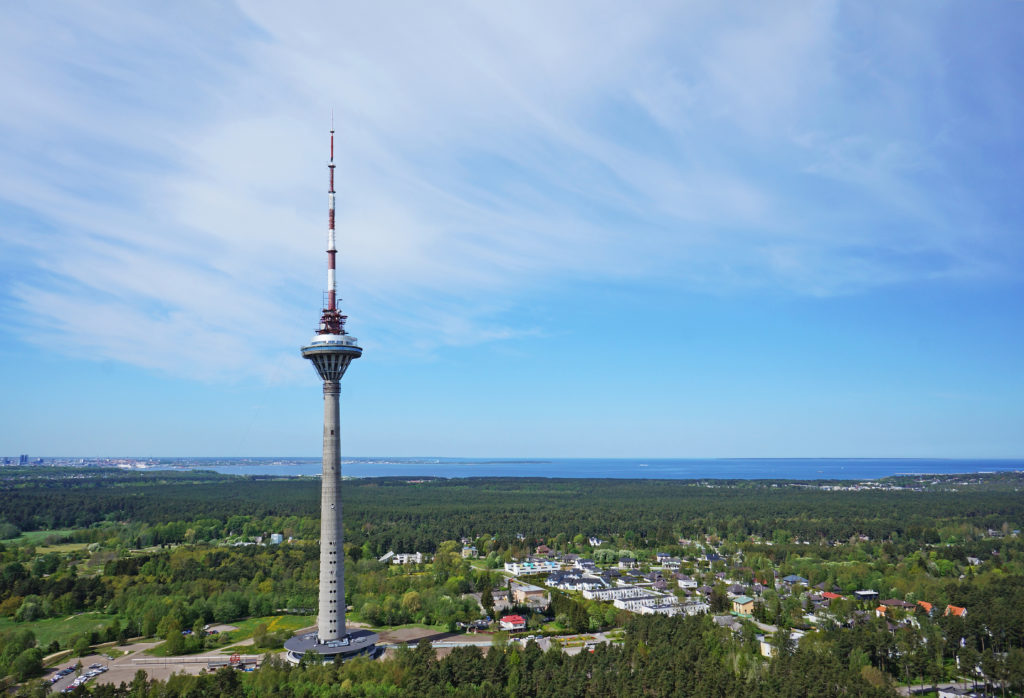
3. Kirov Collective Farm
Estonia has 3,793 km of coastline. For centuries, coastal villages thrived on fishing. When the Soviets arrived, they declared the coast a restricted military zone. Locals lost access to the sea. Many villages were emptied, and nearly half the families fled abroad, creating Estonian communities in Canada, Sweden, and Australia.
1950 the Soviets formed the Kirov Collective Farm by merging smaller fishing groups. Early years were difficult, but with new techniques and processing plants, Kirov became one of the largest farms in the region. Locals joked that “nothing but the smell of fish remained in Kirov.”
👉 Best way to visit: Day Trip to Prangli Island or see “Kirov’s Room” at Viimsi Open Air Museum on the Tallinn Top Attractions Tour.
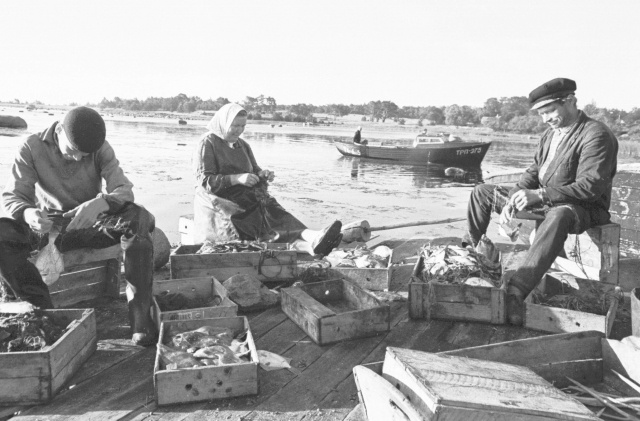
4. Patarei prison and KGB cells
Built in 1840 as a fortress, Patarei was damp and uncomfortable from the start. In the 1920s, Estonia turned it into a prison.
Under Soviet rule, Patarei became a place of fear. The Soviets imprisoned many Estonian officers and politicians here before execution or deportation to Siberia. The prison was overcrowded, forcing inmates to sleep on cold, wet floors.
The prison, together with the KGB cells in Tallinn Old Town, shows the harsh reality of repression. Though redevelopment may soon change the site, you can still visit them today.

5. Soviet air defence and nuclear weapons in Viimsi
From 1959 to 1968, Viimsi housed an S-75 missile unit. Six launchers formed a hexagonal pattern, and a hangar stored nuclear warheads.
When the Soviets left in 1991, the weapons were withdrawn to Russia, Ukraine, Belarus, and Kazakhstan. Under the Lisbon Protocol, these countries later gave the weapons to Russia.
This base shows Estonia’s Cold War importance. At one point, an estimated half a million Soviet troops lived in Estonia – nearly the size of today’s population.
👉 Best way to visit: Secrets of Soviet Tour in Tallinn or Tallinn Top Attractions Tour
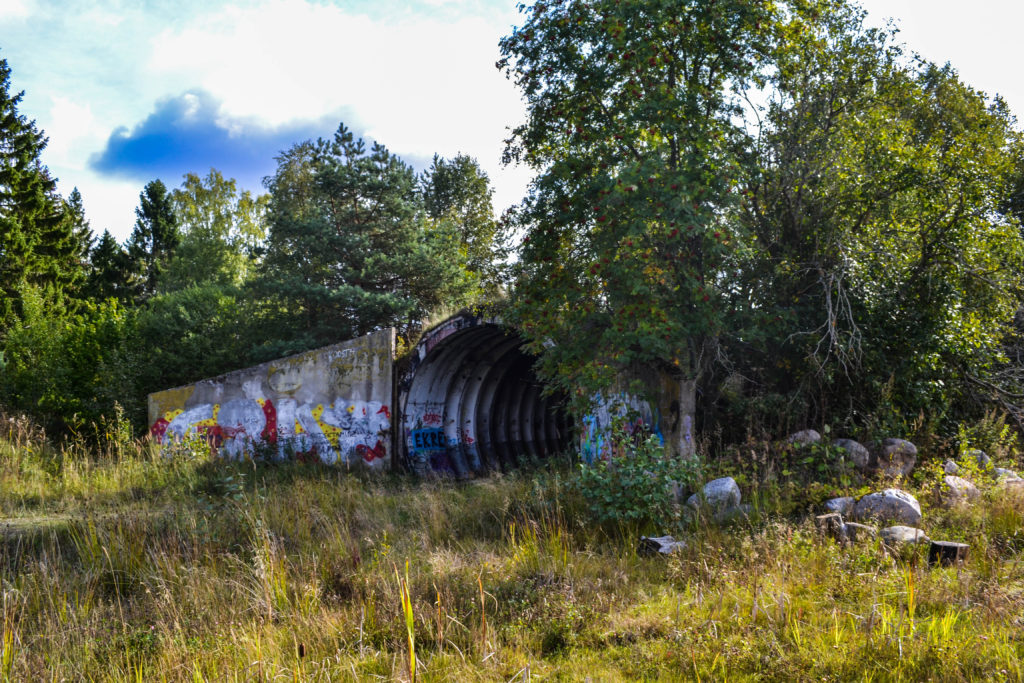
6. Linnahall
Linnahall was built for the 1980 Olympic regatta ceremonies. After independence, it hosted concerts and even had an ice rink. In recent decades, however, it has mostly stood empty.
Despite its decay, the building has architectural value and has appeared in international films and music videos. Renovation is planned, but visitors can still see it in its original brutalist form.
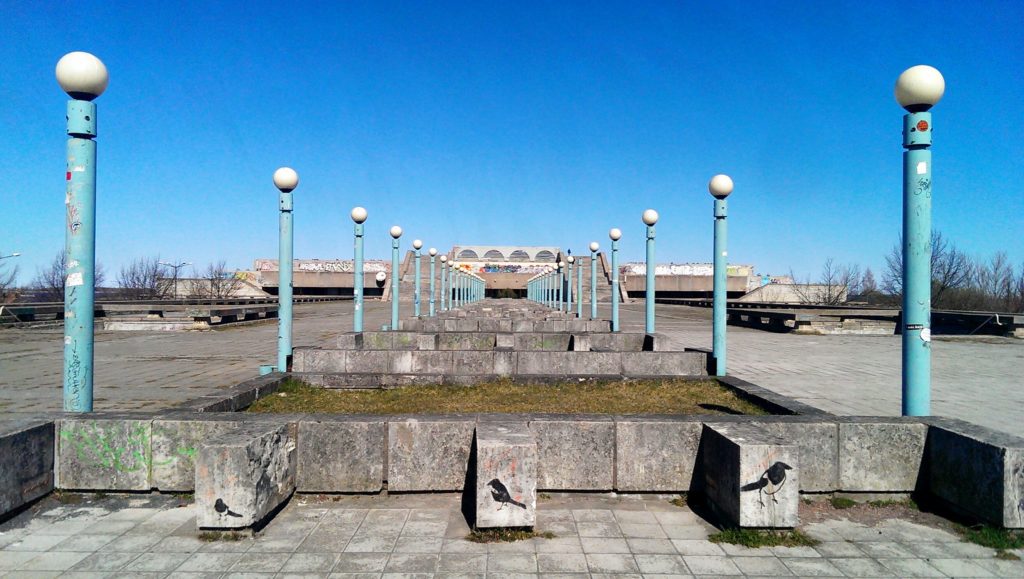
7. Maarjamäe memorials
Maarjamäe lies between central Tallinn and Pirita. Here, two memorial complexes stand side by side: one Soviet-era and one modern. The Soviet part includes a 35-metre obelisk and giant concrete sculptures such as protective hands around an eternal flame. Many locals also come here to watch sunsets by the sea.
Estonians resisted Soviet rule in every way they could. During the first occupation in 1939–1941, the Soviets deported 10,000 people to Siberia. After Nazi Germany’s brief control (1941–1944), the Soviets returned, and deportations resumed. In total, more than 30,000 Estonians and 90,000 Baltic people were deported.
Estonia opened a new memorial in 2018 to ensure these victims are remembered. It lists the names of every known victim of communism. It remains one of the most potent reminders of the human cost of occupation.
👉 Best way to visit: Secrets of Soviet Tour in Tallinn or Tallinn Top Attractions Tour.
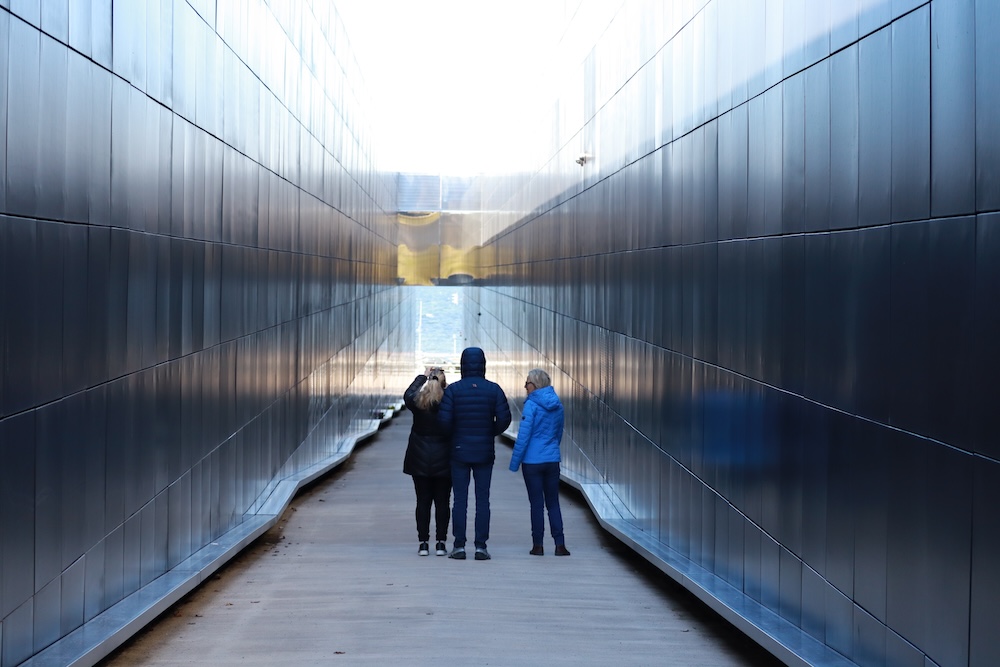
8. Suurupi naval fortress
Peter the Great’s Naval Fortress was built during World War I to protect St. Petersburg. One of its strongholds was near Suurupi, 25 km west of Tallinn. The complex had artillery batteries, concrete bunkers, and metal rails to move heavy equipment to the coast.
Although the base originally had a direct view of the sea, the surrounding forest has grown back over the years, covering much of the landscape. Today, visitors follow beautiful coastal and forest trails that suddenly reveal the ruins. The site is left in its original condition, so you can walk through underground bunkers, crumbling concrete structures and moss-covered walls.
It is a fascinating place where nature and history intertwine – the quiet forest setting contrasts with the heavy military history still visible in the ruins.
👉 Best way to visit: Rummu Submerged Quarry and Coastal Cliffs Tour
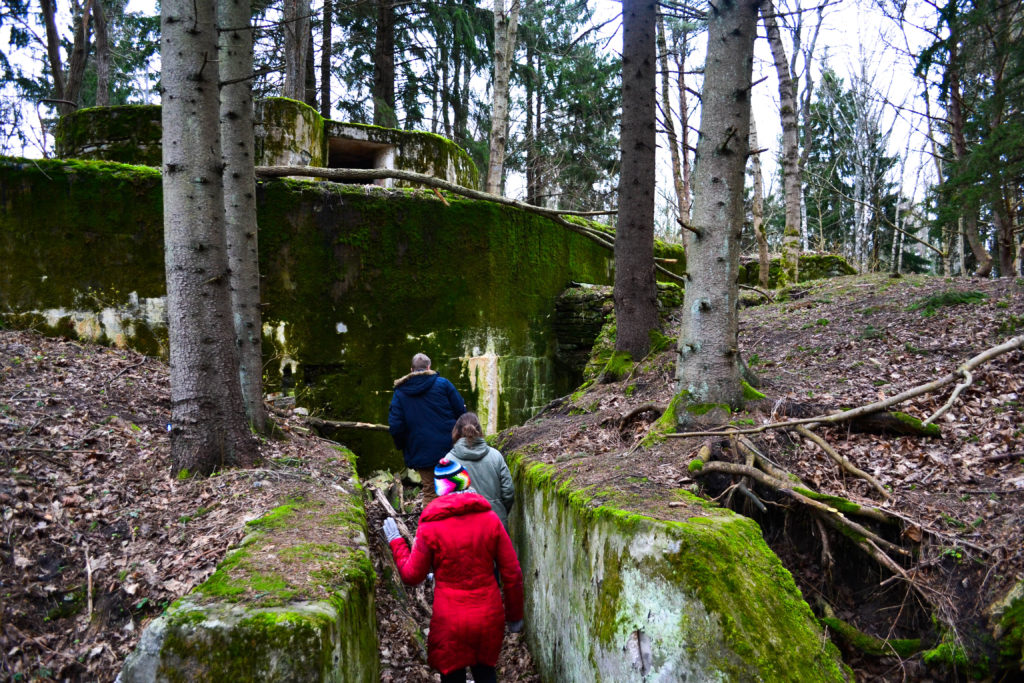
9. Viru hotel
When you exit Tallinn’s Old Town through the Viru Gates, the tall Viru Hotel dominates the view. Opened in 1972, it was the first Soviet luxury hotel in Estonia, built to impress foreign visitors, especially those arriving from Helsinki after the ferry connection opened in the 1960s. For locals, Viru became a glamorous symbol of a different world, offering fine dining, entertainment, and stylish interiors unlike anything in everyday Soviet life.
But glamour came with control. The KGB secretly ran the top floor, bugging rooms and monitoring guests. Visitors had to record which languages they spoke so they could be placed in rooms monitored by the right agent. Locals joked the building was made of “micro-concrete: 60% microphones, 40% concrete.”
Today, the KGB Museum on the hidden floor reveals these secrets. Viru Hotel remains one of Tallinn’s most intriguing Soviet sights, where glamour and espionage met.
👉 Best way to visit: Secrets of Soviet Tour in Tallinn or the Old Town Walking Tour.
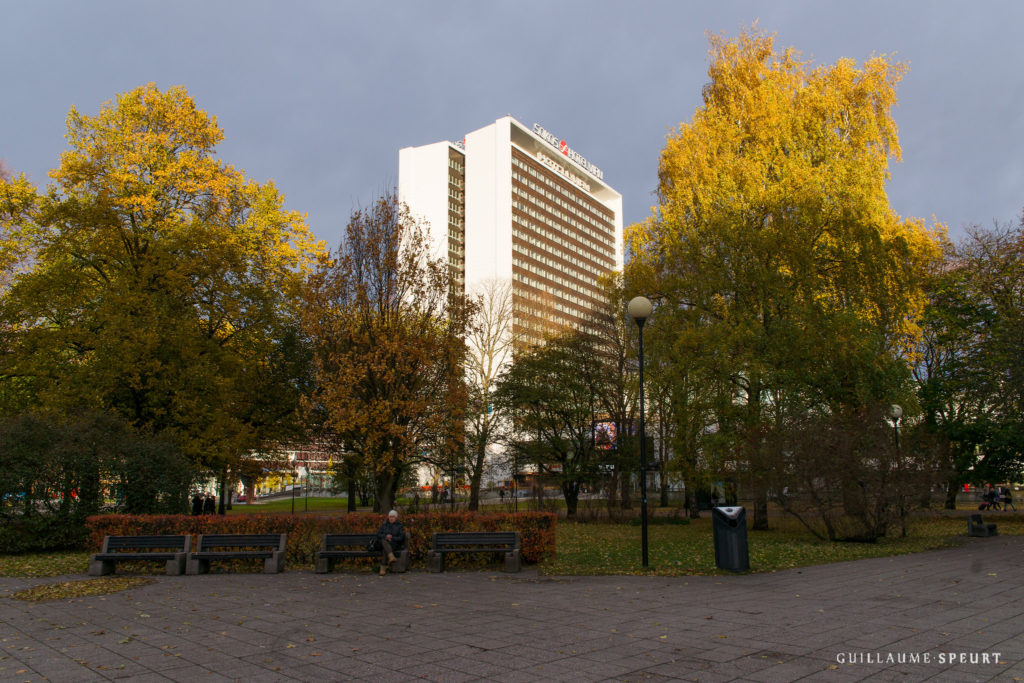
The Soviet occupation years were dark, but they left behind stories and lessons that remain important. Estonia is moving forward, replacing collective farms, panel houses and surveillance systems with modern neighbourhoods and new ideas.
If you want to experience this past, visit these Soviet sights in Tallinn soon. Many are disappearing quickly, replaced by conference halls, apartments and cultural centres.

